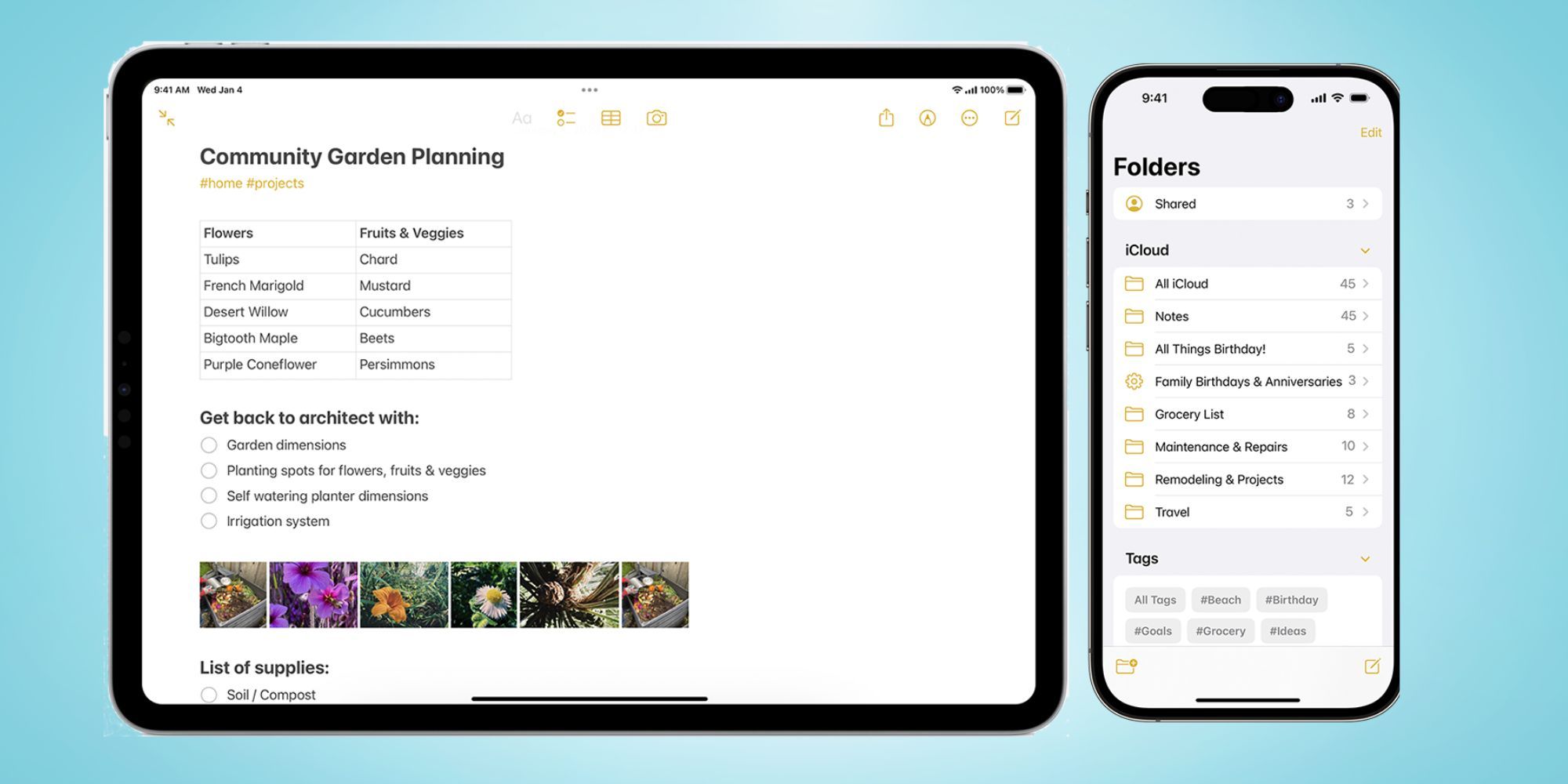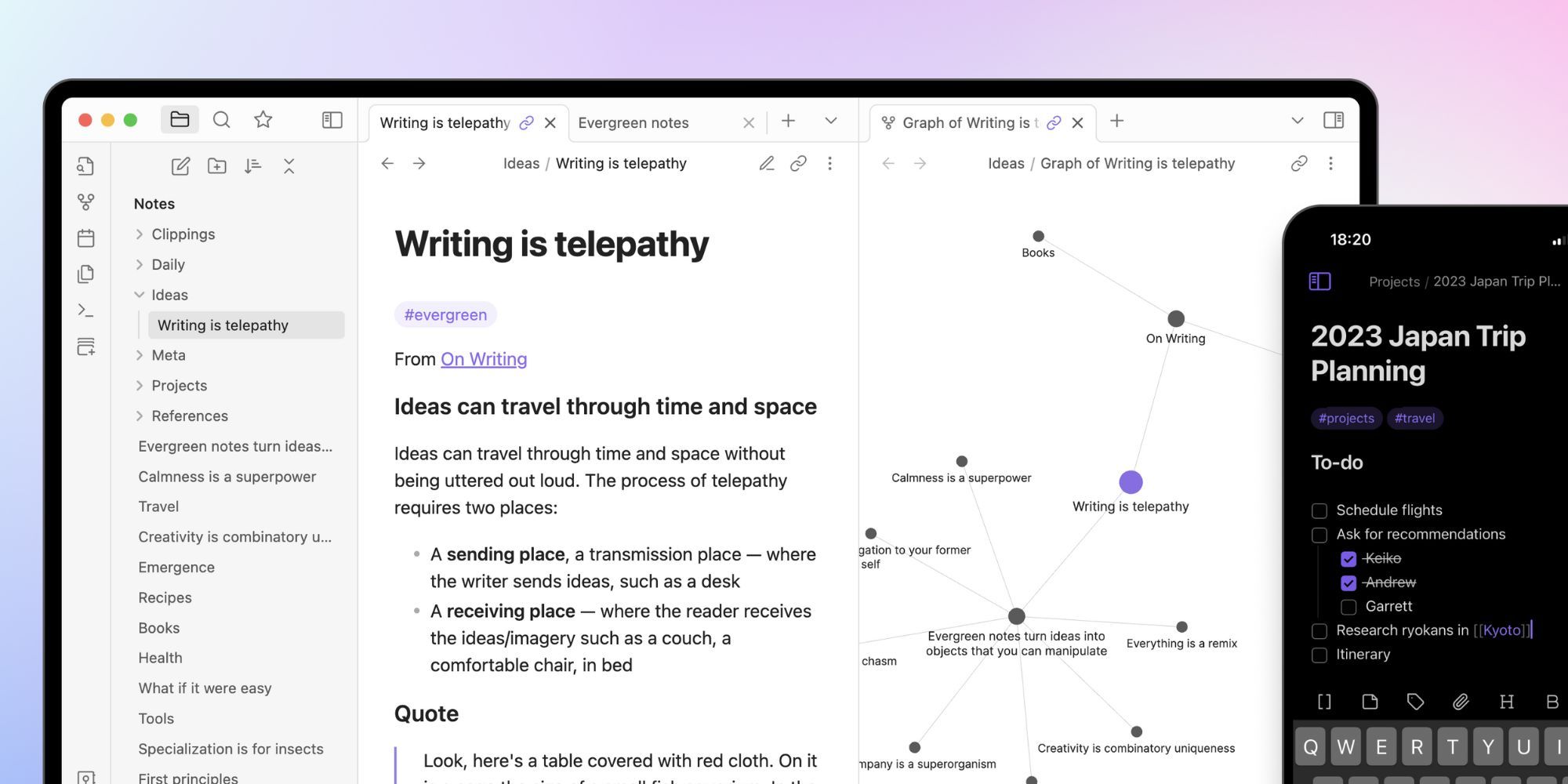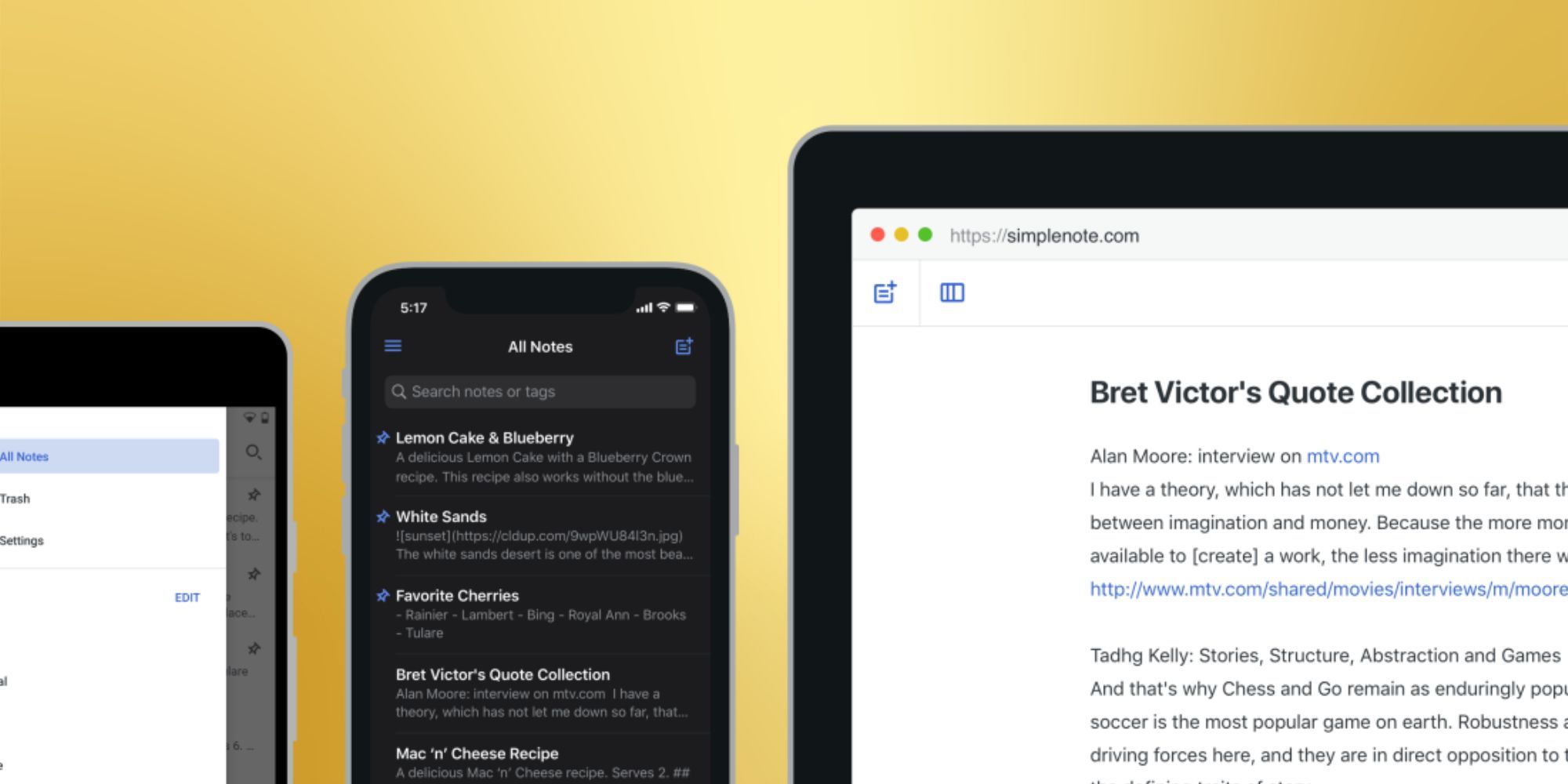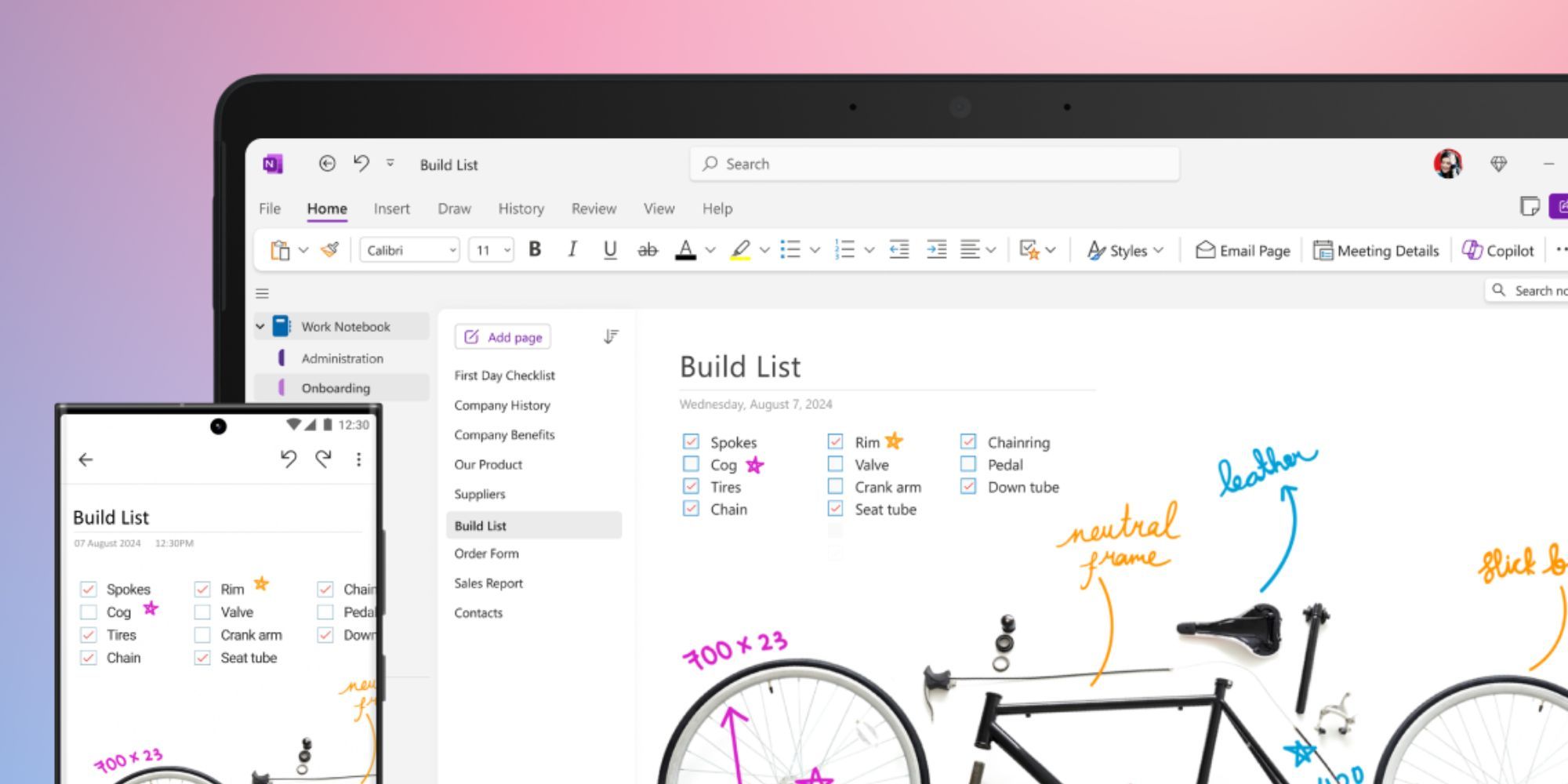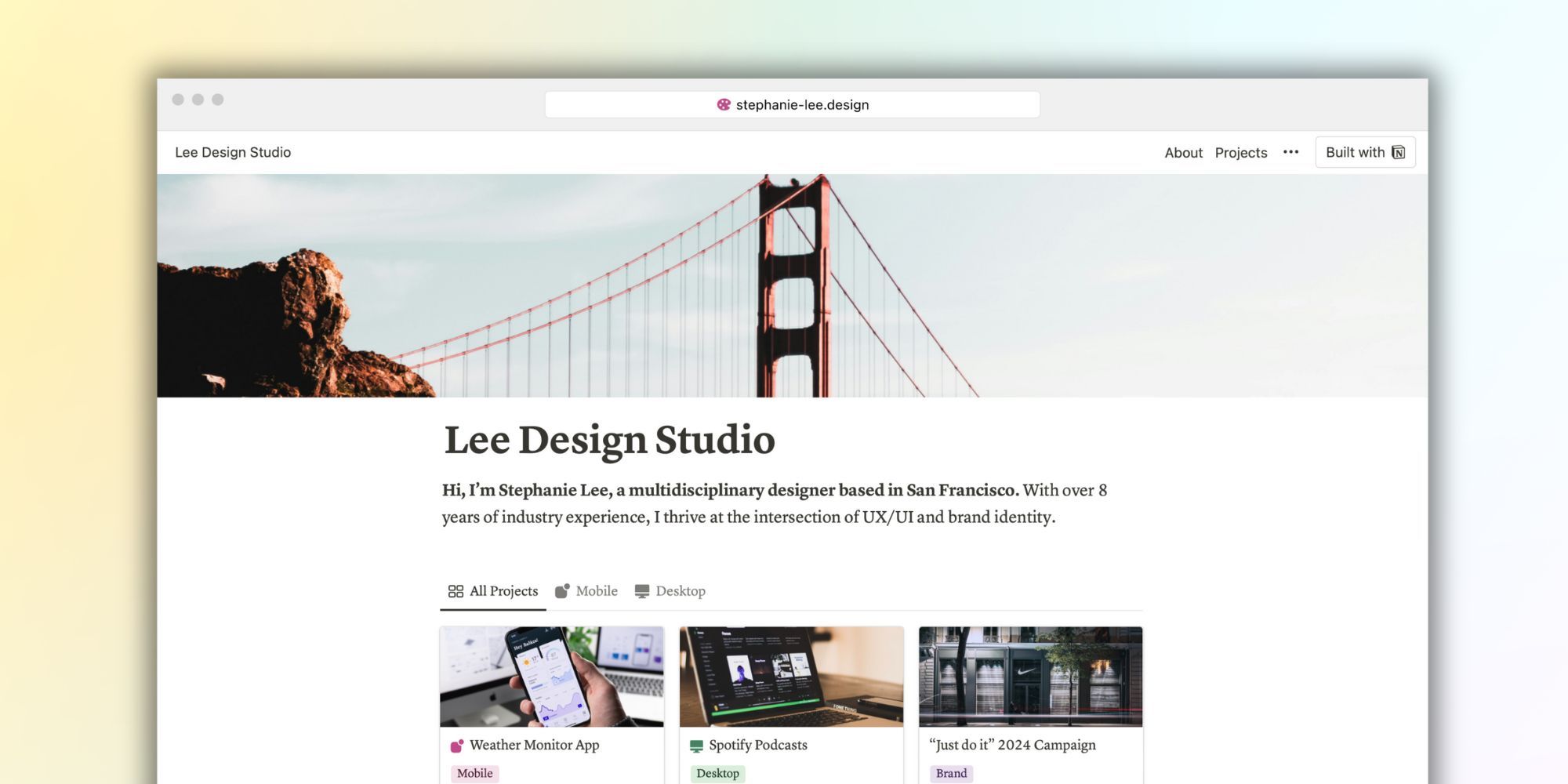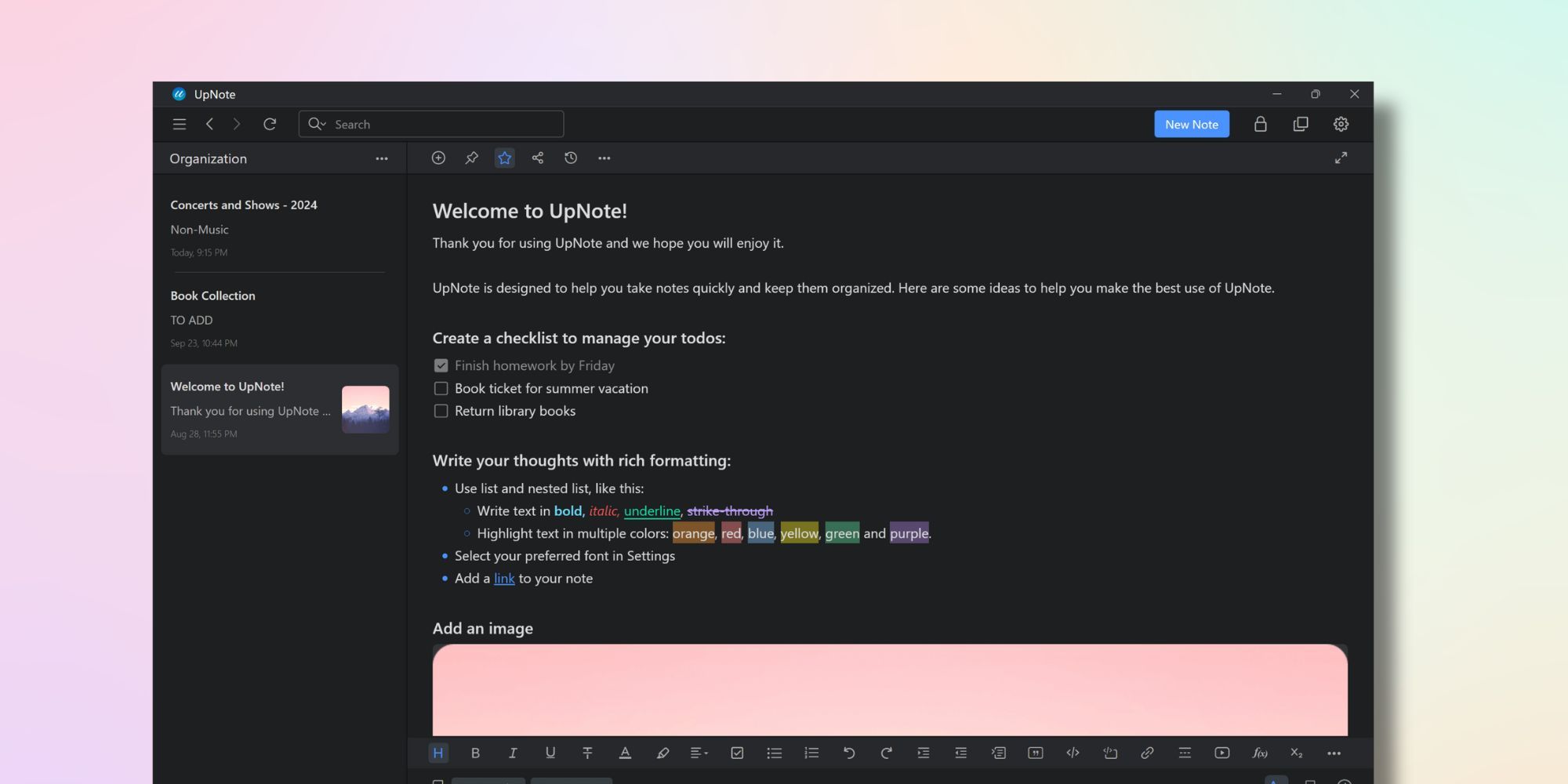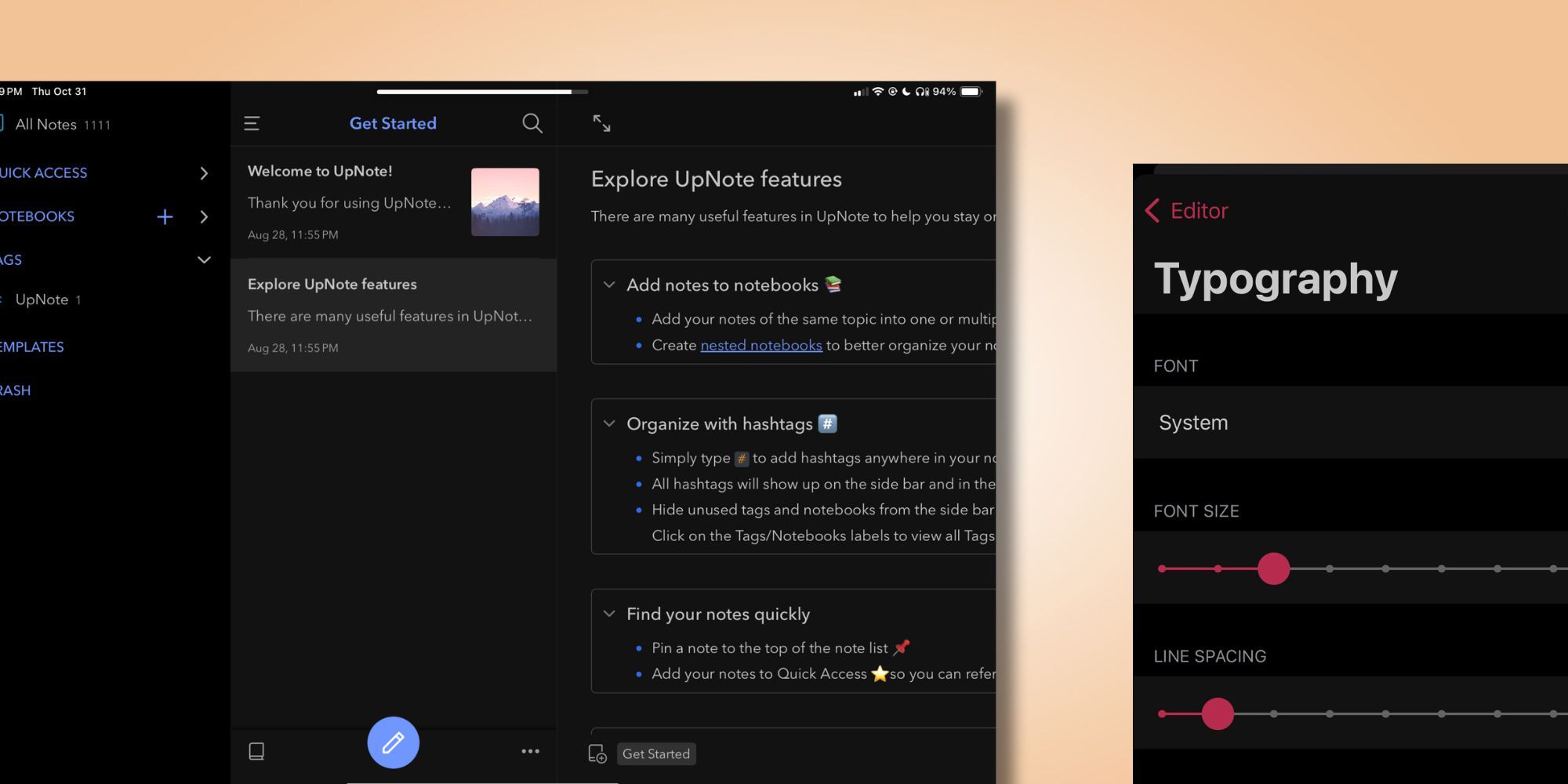A good note-taking app is a big part of every productivity toolkit. Here are six note-taking apps I incorporated into my workflow, and why I think UpNote is the best one.
What Makes a Good Note-Taking App?
I have been on the hunt for the perfect note-taking app for as long as I can remember. Not only are these apps crucial for my workflow, but I also use them to organize my personal life. Whether it’s making a grocery list, to-dos for the week, or lists of my favorite albums, a good note-taking app is essential.
I tried six different apps in search of the perfect digital notebook. Several factors influenced my decision-making process.
First, I use an iPhone, an iPad, and a Windows PC, so I need an app that natively supports all three platforms and syncs across all my devices.
Whenever possible, I also try the premium version of the app I’m using, in part to see whether paying is necessary for a decent experience.
Lastly, there are many great apps that aren’t on this list, such as Joplin, Evernote, and Bearnote, but many of them have overlapping features with the apps I mentioned, so I opted to keep it to these six.
1 Apple Notes
Apple Notes is a popular note-taking tool, and for good reason. Not only is it completely free and included with every Apple device, but Apple Notes has all the core features you’d expect from a modern note-taking app. The writing interface is clean and straightforward, and notes automatically sync between devices. There’s also robust integration with Siri for quickly transcribing voice notes.
Given all that, Apple Notes was the first app I considered. One of its only drawbacks is its lack of robust support for non-Apple operating systems, such as Android, Windows, and Linux, which eliminated it from my options.
While there is a web app, it’s clunky, and signing in to your iCloud account in a browser can be tricky. If I regularly used a MacBook, I might be more inclined to consider it as my main note-taking app. However, for many people, this app is essentially the gold standard for a free note-taking solution.
Download: Apple Notes (Free)
2 Obsidian
Obsidian is a note-taking app you may have never heard of; it stands apart from other tools on the market. Unlike apps that come with built-in syncing and a formatting UI, Obsidian is entirely built around your computer’s existing file structure and markdown—a coding language used to create rich text with simple commands.
Every Obsidian note is a text file located inside a folder that acts as a notebook. All your files are stored locally on your computer, but you can pay an additional $4 per month for Obsidian Sync to smoothly sync your notes across devices.
The app is designed with knowledge management in mind, featuring a robust set of tools that allow you to view associations between different notes. It’s a perfect choice if you want a central place to manage all your knowledge. It’s incredibly powerful for planning academic papers or building a network of related notes.
However, for everyday note-taking like grocery lists and quick jots, the learning curve around markdown formatting can be slightly overwhelming, especially when compared to a more streamlined experience like UpNote.
Download: Obsidian (Free, Obsidian Sync costs $4/month)
3 Simplenote
Simplenote is what I used for years before switching to UpNote. Among all the apps on this list, it has the most straightforward feature set. All your notes are in one folder and sorted by the most recent. The notes offer minimal formatting options upfront, with checkboxes available for to-do lists. You can activate markdown, but there are no buttons in the interface to help format the text.
Despite its simplicity, Simplenote remains one of the most elegant note-taking solutions available. All your notes sync quickly across all platforms, and you can back up your notes with a local import at any time.
While it doesn’t have all the bells and whistles of apps like Obsidian or UpNote, it’s an excellent option for those seeking a stripped-back alternative to Apple Notes.
Download: Simplenote (Free)
4 OneNote
Microsoft’s flagship note-taking app has been a steady presence for many years due to its inclusion in the popular Office suite. It’s not hard to see why: it’s straightforward, usually comes with a new Windows install, is incredibly versatile, and offers a very familiar experience. Additionally, the file management on OneNote is highly intuitive, with easily accessible notebooks that sync automatically across devices.
I have attempted to use OneNote many times over the years, but the interface and design has never really resonated with me. However, someone more attuned to the Microsoft ecosystem who values tight integration might enjoy it. It’s also an ideal app for those using Windows tablets because of its strong compatibility with the touch display.
Download: OneNote (Free)
5 Notion
Notion is great for productivity-boosting and is one of the most versatile apps I’ve ever tried. It combines the features of a note-taking tool, project management software, database manager, and page designer all in one. That means it can create complex databases, project dashboards, and even elegant webpages. There are thousands of templates readily available for everything from sorting your personal library to managing your budget.
However, the interface, with all its complexity, doesn’t lend itself well to quick notes, and you may find it challenging to keep random thoughts organized. Notion’s deeply integrated AI tool makes it even more difficult to keep things simple. Still, if you’re looking for a robust tool to manage every aspect of your life, project, or business, Notion might fit the bill.
Download: Notion (Free, premium version starts at $10/month)
6 UpNote
After hopping between note-taking apps, I eventually discovered UpNote. Despite its relative newness to the market, UpNote offers a remarkably polished experience. It combines many of the best features from different apps: the jot-friendliness of Simplenote, the streamlined organization of OneNote, and the elegant interface of Notion.
Native apps are available for iOS, Windows, Linux, Android, and Mac, with notes syncing seamlessly across devices.
The note-taking interface is feature-packed without being overwhelming, offering native support for rich text, images, tagging, and tables. Notes are organized intuitively with custom notebooks, tags, and easy linking between notes. You can also easily create templates for frequently made notes.
Importantly for me, the interface is very visually appealing. Notebooks have custom icons, and you can adjust line and paragraph spacing in the settings, with various design elements feeling thoughtfully considered. It’s the perfect all-in-one note-taking app for my needs.
Download: UpNote (Free, premium version for $1.99/month or $39.99/lifetime)
While I have settled on UpNote as my primary note-taking app, there isn’t one perfect choice for everyone. Some might prefer the straightforwardness and out-of-the-box experience of Apple Notes, while others might favor the power and knowledge management capabilities of Obsidian. You can even combine two apps in your workflow, such as using Simplenote for quick jots and Notion for powerful database management.
I’ve found that UpNote excels at combining the best of both worlds: providing a space to quickly capture my thoughts while still allowing me to organize them into notebooks and format them extensively later. However, that doesn’t mean it’s the best choice for everyone. If you’re still searching for the perfect app, all the note-taking tools on this list are either free or offer a free version, so try them for yourself!

